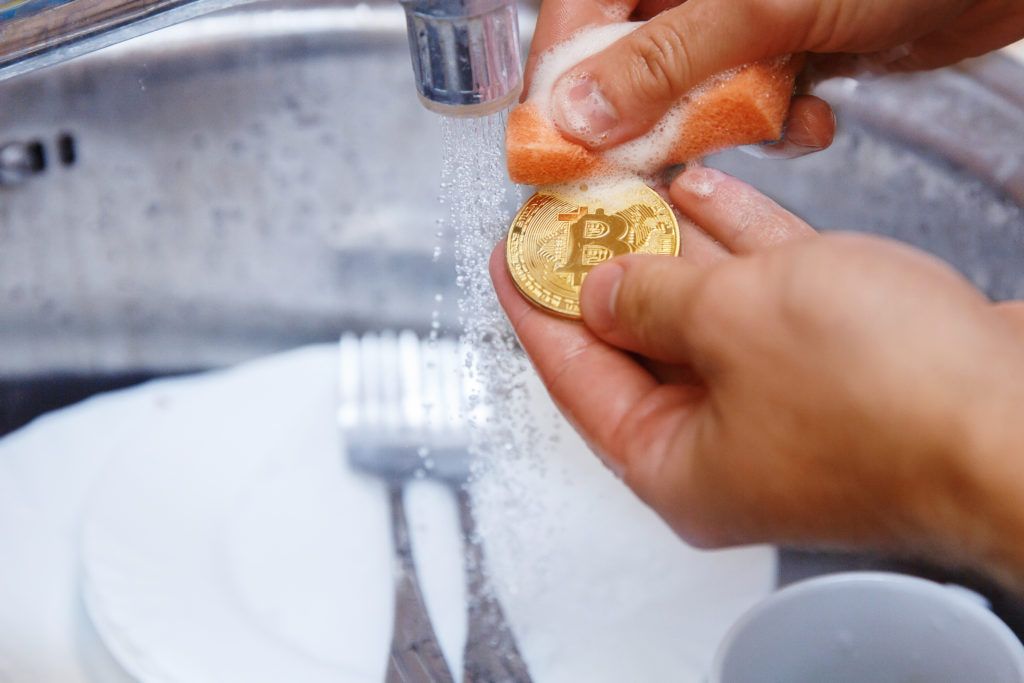Bitwise, a financial asset management company based out of San Francisco, recently conducted a study of cryptocurrency market volumes on over 81 exchanges while looking for inconsistencies that highlight wash trading.
According to the report produced by Bitwise, more than 95 percent of all trading performed at the investigated exchanges is fake.
The study finds that these exchanges fake their daily trade volumes in order to inflate the apparent trading activity of their platform in an attempt to both attract new traders and generate additional revenue through coin listing fees — which can sometimes run into the millions of dollars.
In the fallout, many expert traders and investors have started questioning the effectiveness of using an asset’s market capitalization as a sign of its market dominance — since this can be easily manipulated.

Cryptocurrencies ≠
The study brings to light a fact already known to most traders that have been actively trading in the cryptocurrency niche: In order to ‘appear’ prominent in the otherwise highly-competitive cryptocurrency exchange space, the great majority of smaller exchanges will utilize a practice known as wash-trading to inflate their trade volume figures, helping them climb up the table on exchange ranking platforms. To do this, the exchange will simply execute successive orders on a digital asset using puppet accounts that are either manually controlled or operated by a bot — driving up its apparent trade volume. Because the change in trade volume is one way to determine whether a cryptocurrency is ‘trending,’ many cryptocurrency trades will attempt to hop onboard — which, in turn, drives up the volume further. This is all as a result of the original market manipulation. The study was led by John-Paul Thorbjornsen, within which he talks about the Pareto principle — or the 80/20 rule. This principle is observed in nature as a rule of equilibrium, whereby there is a functional relationship between two quantities, which sees a relative change in one part of the equilibrium cause a proportional change in the other part, known as a kind of statistical power law. Thorbjornsen suggests that an open market should also follow a similar rule, indicating that 20 percent of all causes are responsible for 80 percent of visible results. In relation to cryptocurrency, this would mean that 20 percent of cryptocurrency should dominate 80 percent of the market.As it turns out, Thorbjornsen’s suggestion does ring true with cryptocurrencies, as his recent report shows that, when you use trade volume to weight the market capitalization of cryptocurrencies, it becomes much clearer which cryptocurrencies are truly successful — with the top 20 percent of coins achieving 85 percent of the market volume, while Bitcoin alone achieves an 80 percent volume weighted market cap.I just published Bitcoin’s True Market Dominance https://t.co/Ikts82v19u
— JP (@jpthor) March 22, 2019
Are Cryptocurrency Market Caps Meaningless?
In the Bitwise study, it was found that, if a cryptocurrency wasn’t being manipulated by fake trade volume, it may have still had its value manipulated through coordinated ‘pump and dump’ groups. These groups have a single objective: to drive up the price of a cryptocurrency to a point where other naive traders buy in while looking to cash in on the spike. Once a sufficient number of new buy-ins has been reached, the asset is then dumped by those participating in the pump — with the new investors bearing the brunt of the damage as they purchase these tokens at a now inflated market rate. When examining the market depths in logarithmic scales, major imbalances in trade volumes were found — despite the detection of some kind of ‘law of power’ in the market, which acts to resist market manipulation. However, when the product of the volume and market capitalization was studied, after removing the bottom third of the coins most manipulated coins, a much higher level of interrelationship was observed — solidifying Thorbjornsen’s power law distribution theory. Overall, these useless trades represented a major part of the daily trading activity in many of the studied crypto-markets. At the most extreme end of the scale, some assets achieved just 0.1 percent of their market capitalization in daily trade volume — indicating that these cryptocurrencies had been almost completely cornered by those artificially manipulating their market cap and trade volume.
Volume Weighted Capitalization: A Better Alternative?
For many underperforming assets, exchanges essentially have free reign over the trade volume. This makes it easy for coin or token to be easily manipulated to either make the asset or the exchange appear more valuable. However, the FOMO mentality these unscrupulous exchanges try to inspire might soon come to an end if some proof-of-stake (POS) coins get their way. New assets that utilize POS, such as Dash, NEO, Stratis, and many more, are actively encouraging their communities to hold their assets in their wallets while participating in the staking mechanism for extended periods of time — offering an often-generous dividend or staking reward for doing so. Overall, the study shines a spotlight on the darkest corners of cryptocurrency trading, suggesting that future calculations of market dominance should factor in volume weighted capitalization, rather than solely relying on market capitalization to ascertain the true dominance of a cryptocurrency, since this is easily manipulated — particularly in the case of smaller cryptocurrencies. What do you think the best measure of success is for cryptocurrencies? Is there any metric that is 100 percent fool-proof? Let us know your thoughts in the comments below!
Top crypto platforms in the US
Disclaimer
In adherence to the Trust Project guidelines, BeInCrypto is committed to unbiased, transparent reporting. This news article aims to provide accurate, timely information. However, readers are advised to verify facts independently and consult with a professional before making any decisions based on this content. Please note that our Terms and Conditions, Privacy Policy, and Disclaimers have been updated.

Daniel Phillips
After obtaining a Masters degree in Regenerative Medicine, Daniel pivoted to the frontier field of blockchain technology, where he began to absorb anything and everything he could on the subject. Daniel has been bullish on Bitcoin since before it was cool, and continues to be so despite any evidence to the contrary. Nowadays, Daniel works in the blockchain space full time, as both a copywriter and blockchain marketer.
After obtaining a Masters degree in Regenerative Medicine, Daniel pivoted to the frontier field of blockchain technology, where he began to absorb anything and everything he could on the subject. Daniel has been bullish on Bitcoin since before it was cool, and continues to be so despite any evidence to the contrary. Nowadays, Daniel works in the blockchain space full time, as both a copywriter and blockchain marketer.
READ FULL BIO
Sponsored
Sponsored
